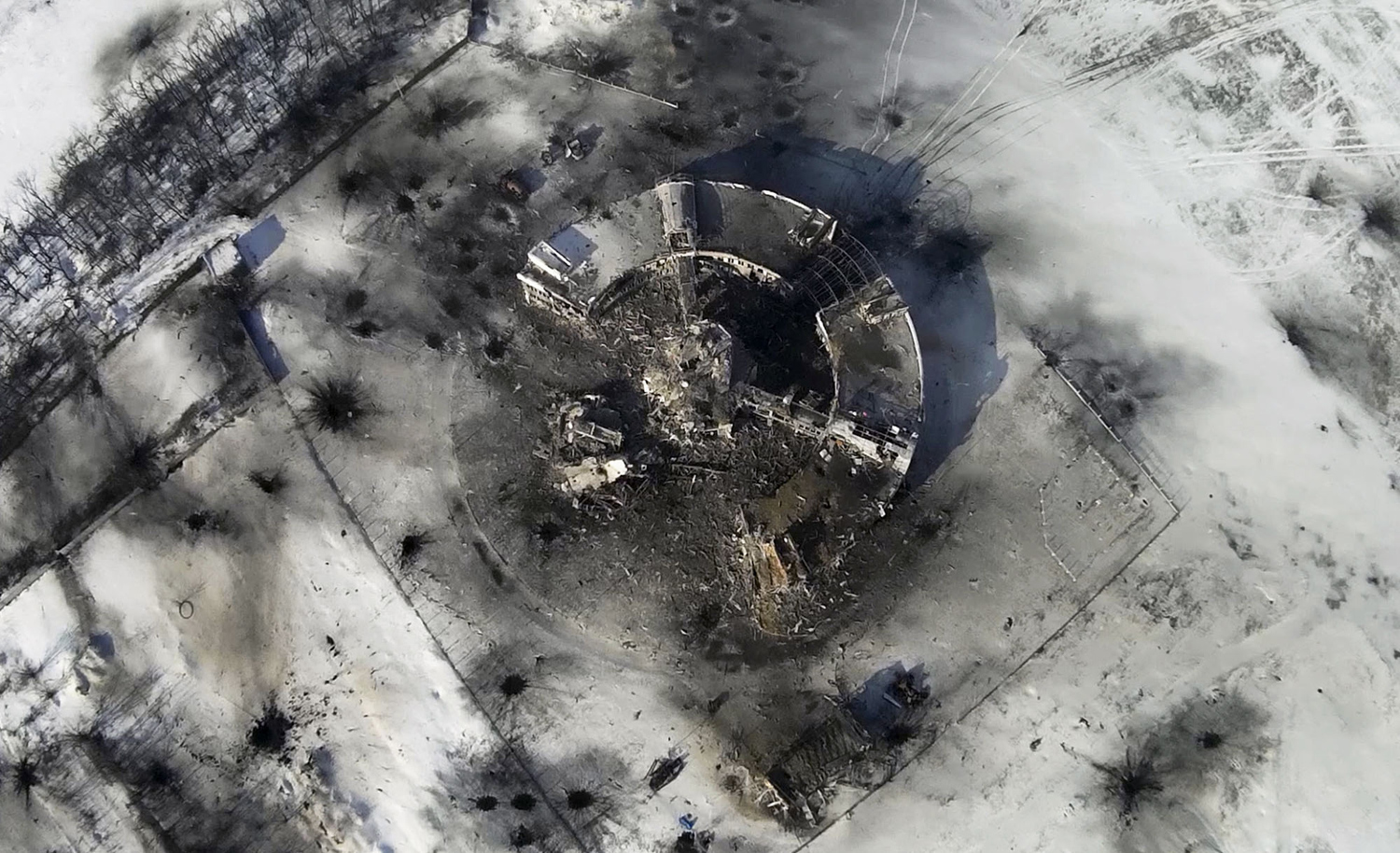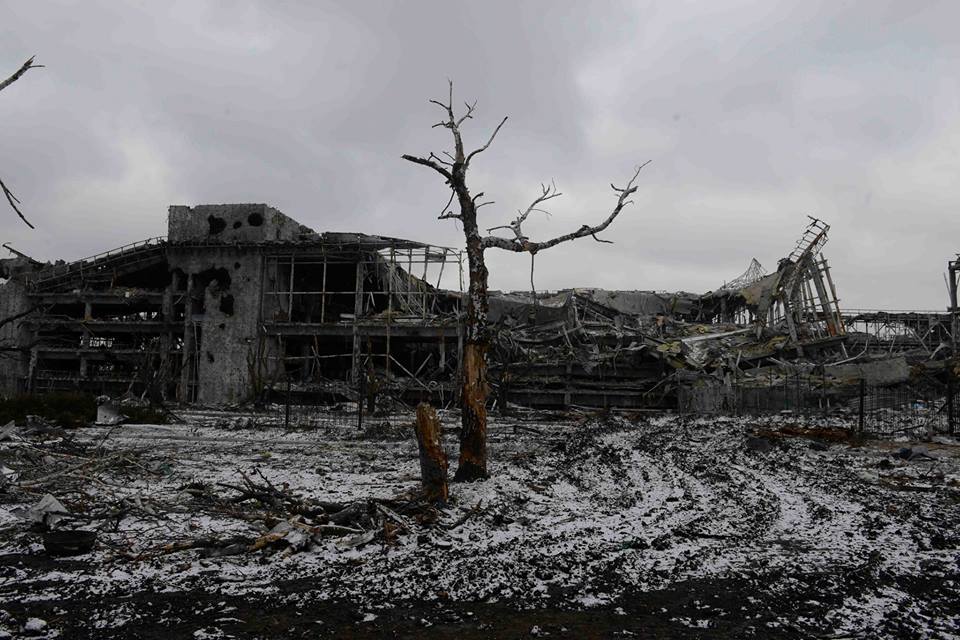On 25 May 2014 Ukrainian airborne troops landed on the runway of Donetsk Airport and took control of the perimeter and control towers.
Overnight into 26 May 2014, an employee of the Ukraine's Security Service let Russian armed troops into the Donetsk International Airport:
Russian-hybrid forces captured the terminal buildings of the Airport and demanded the withdrawal of government forces from the area.
The last plane took off from Donetsk at 07:10 on 26 May 2014.
Later on 26 May the first battle took place in Donetsk International Airport. Ukrainian paratroopers launched an assault on the airport, the air force was used to destroy anti-aircraft guns and trucks with reinforcements heading towards the airport.
In the evening of May 26, Ukrainian armed forces took full control of the airport to hold in long 242 days, longer than the duration of the defense
of most “hero cities” of the USSR during WWII, like Stalingrad.
Sporadic skirmishes and attacks lasted until September 2014, when clashes intensified and Russian-hybrid forces started to massively use heavy artillery, multiple rocket launchers, tanks, self-propelled guns.
Read more: Meet Ukraine’s legend: the cyborgs defending Donetsk airport
Everyday intense bombardments accompanied unceasing attacks of the Russian infantry and special forces during four months.
First days of the battle:
#Donetsk #airport, the beginning @Victorius_Prime pic.twitter.com/nkBiSpDUWY #history
— English Luhansk (@loogunda) March 29, 2016







The Ukrainian soldiers who repelled intense daily gunfire and artillery attacks became a symbol of Ukrainian resistance, the opposing combined Russian forces labeled the Ukrainian troops "cyborgs" due to their superhuman resilience.
When the Russian hybrid forces finally captured the airport, it was a “pile of rubble
,” all buildings were ruined, the cratered runway was littered with the wreckage of war.
Donetsk International Airport in 2017
Remnants of military equipment can be still found near the ruined buildings of the airport.
#Donetsk #airport pic.twitter.com/rq2U2C2DDg
— English Luhansk (@loogunda) April 27, 2017
As of 2017, ruined constructions of the Russian-held airport are used a tank depot and artillery position to attack villages of Pisky and Opytne.
Apr2017 #Airport #Donetsk @VidalSorokin Tanks of RU invaders in ruined Donetsk airport pic.twitter.com/510XSDl9lZ
— English Luhansk (@loogunda) April 30, 2017
Infographic of the Battle of Donetsk Airport (2014-2015)

Post scriptum
In March 2014, Donetsk Philharmonic Orchestra participated in all-Ukraine flashmob, having performed Beethoven's Ode to Joy at Donetsk International Airport. Other Ukrainian orchesters played the same perfomances in Kyiv, Lviv, Odesa, Kharkiv, Dnipro.
Two months later the war came to Donetsk Airport. Months later it ceased to exist.

Read also:
- Chronicles of heroic Ukrainian Donetsk Airport “Cyborgs” soon on the big screen
- Cyborgs on Film: New Documentary Chronicles Donetsk Airport Battle
- Meet Ukraine’s legend: the cyborgs defending Donetsk airport
- The story of one cyborg
- Victim of Russia’s War Crime: Gassed Cyborgs’ Medic or “Simply Tania”
- Interview with a ‘Cyborg’: “Ukraine above all else”
- Meet Ukraine’s legend: the cyborgs defending Donetsk airport
- Cyborgs on Film: New Documentary Chronicles Donetsk Airport Battle
- Cyborgs send greetings from Donetsk Airport
- Cyborg commander Oleh Kuzmynykh to be released from captivity







